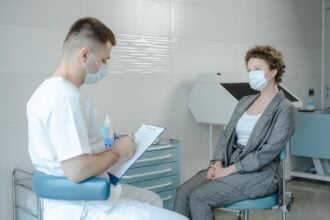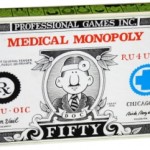 A colleague forwarded on a momentarily disheartening clip from the Washington Post last week.
A colleague forwarded on a momentarily disheartening clip from the Washington Post last week.
 A colleague forwarded on a momentarily disheartening clip from the Washington Post last week. The article, entitled Anesthesiologist trashes sedated patient–and it ends up costing her, included an audio clip from the patient’s cell phone that he had inadvertently left running during a colonoscopy in which healthcare professionals charged to care for him instead chose to act like grade school bullies. The anesthesiologist, who was one of two physicians named in a lawsuit for medical malpractice and defamation, is clearly heard on the audio clip belittling and taunting the patient while sedated. Additional staff is heard laughing as the proceduralist and anesthesiologist continue their disturbing banter. No one in the room, or at least no one on the audio clip included in the Post article, told them to stop. I will bet, however, there was at least one person in the room who wanted to say something.
A colleague forwarded on a momentarily disheartening clip from the Washington Post last week. The article, entitled Anesthesiologist trashes sedated patient–and it ends up costing her, included an audio clip from the patient’s cell phone that he had inadvertently left running during a colonoscopy in which healthcare professionals charged to care for him instead chose to act like grade school bullies. The anesthesiologist, who was one of two physicians named in a lawsuit for medical malpractice and defamation, is clearly heard on the audio clip belittling and taunting the patient while sedated. Additional staff is heard laughing as the proceduralist and anesthesiologist continue their disturbing banter. No one in the room, or at least no one on the audio clip included in the Post article, told them to stop. I will bet, however, there was at least one person in the room who wanted to say something.
I say momentarily disheartening, however, because as I sat listening and briefly wondering how any of the work we do educating the young–teaching them to stand up to bullies and disruptive healthcare “professionals” like this in the workplace or to stand up for patients–was going to overcome the still so well-ensconced medical culture, I quickly found solace in the fact that we like to elevate the train wrecks in all walks of life. And the Post was most definitely covering the story of a train wreck.
Knowing that our culture is comprised of the stories we share, I just as quickly recalled multiple stories of the great work being done in my small corner of healthcare alone. Take, for example, the weekly Good Catch stories shared throughout the MedStar Health system showing exactly how the 80-20 rule can be applied to healthcare bullies. I was comforted by the fact that for the 2 physicians mentioned in the Post story, I knew of at least 8 good people protecting patients in just one health system. Stories of visiting nurses who ensure the safety of those in the home, or of the local security guard who sits with a soon to be patient until help arrives. Stories of nurses who speak up when care does not seem to be going in the needed direction, and stories of physician leaders who actually lead, setting the stage for those often silenced to share their voice. Yes, the 80% is alive and well!
Those who aren’t convinced it is just good form or good karma to treat patients and/or colleagues with dignity and respect can turn to a growing body of formal research that contends bullying and incivility in the workplace has many costs, including patient safety and workforce overall well-being. An opinion piece in the New York Times on June 19th entitled, No Time to Be Nice At Work, by Christine Porath refers to a survey of more than 4,500 doctors, nurses and other hospital personnel of which “…71 percent tied disruptive behavior, such as abusive, condescending or insulting personal conduct, to medical errors, and 27 percent tied such behavior to patient deaths.” Porath also references work recently published in the American Journal of Management, Does Rudeness Really Matter? The Effects of Rudeness on Task Performance and Helpfulness, which showed people working in an environment that lacked civility missed information directly in front of them and offered fewer creative solutions to tasks before them. The same was true if individuals simply witnessed an exchange of rudeness.
It matters not whether it ends up being the data or the stories that drives us to treat one another, especially patients, with dignity and respect in the healthcare environment. And maybe stories like the one in the Post last week are needed in some strange way, if only so that they might discourage the next bad actor who has failed to mature themselves from lashing out at the vulnerable. I do know, however, that we need to add at least five stories of the good work healthcare professionals are doing each day to counteract the negative force a story like this carries into the mainstream. In the meantime, we need to continue to empower those healthcare professionals who want to do better, especially young healthcare trainees. There are many within healthcare who look at the Post story and are embarrassed to be part of a profession that would allow this to continue but have yet to find their voice or platform. Here’s to the good guys and gals–the 80%–we know you’re out there. It is up to healthcare leaders to give them a pen…or a mic!
![]()









